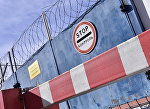MOSCOW, February 14 (RAPSI, Ingrid Burke) – A US federal appeals court granted BP shareholders permission on Thursday to go after the company on allegations of securities fraud arising from two Alaskan oil spills that temporarily stalled regional operations, thus reversing in part a lower court’s decision to dismiss the case.
According to the judgment, one of BP’s Alaskan pipelines sprung a leak in March 2006, leading to the spillage of approximately 200,000 gallons of oil in the Alaskan tundra.
The judgment states that although the company initially assured the public that the spill was an anomaly, it then temporarily shut down its regional operations when a second leak sprung five months later. The second spill and shutdown allegedly caused BP’s share price to dip four percent.
In June 2008, BP shareholders filed a proposed class action lawsuit alleging that the company made false and misleading statements about the quality of the Alaskan pipelines, as well as the leak-detection practices that were in place prior to and in the direct aftermath of the first oil spill.
The plaintiffs, on behalf of themselves as well as a class including “all purchasers of BP stock between June 30, 2005 and Aug. 4, 2006,” sought damages for losses sustained by investors during the temporary regional shutdown.
The US District Court for the Western District of Washington dismissed the case in March 2012, finding that the plaintiffs had failed to sufficiently demonstrate that the statements at issue gave rise to a strong inference of scienter, a term that refers to “a mental state embracing intent to deceive, manipulate, or defraud.”
A panel of three judges for the US Court of Appeals for the Ninth Circuit on Thursday held to the contrary that the allegations, when considered holistically and accepted as true, give rise to a finding that “the inference that BP was, at the very least, deliberately reckless as to the false or misleading nature of their public statements is at least as compelling as any opposing inference.” (Internal quotes omitted.)
As such, the panel concluded that, “after six years of preliminary litigation, the allegations should now be tested on the merits.”
The panel found that the plaintiffs had pled adequately with regard to certain BP statements on corrosion rates, distinctions between pipelines, and compliance with environmental laws and regulations. However, the panel found that the plaintiffs failed to sufficiently allege scienter in connection with a statement involving BP’s “world class corrosion and leak detection systems.”
The case has been returned to the district court.
At this point in the proceedings, defendants include: BP PLC, described by the court as the largest oil and gas producer in the US; BP Exploration Alaska, a wholly owned BP subsidiary based in Alaska; and certain high-ranking officers active during the period at issue in the case.


